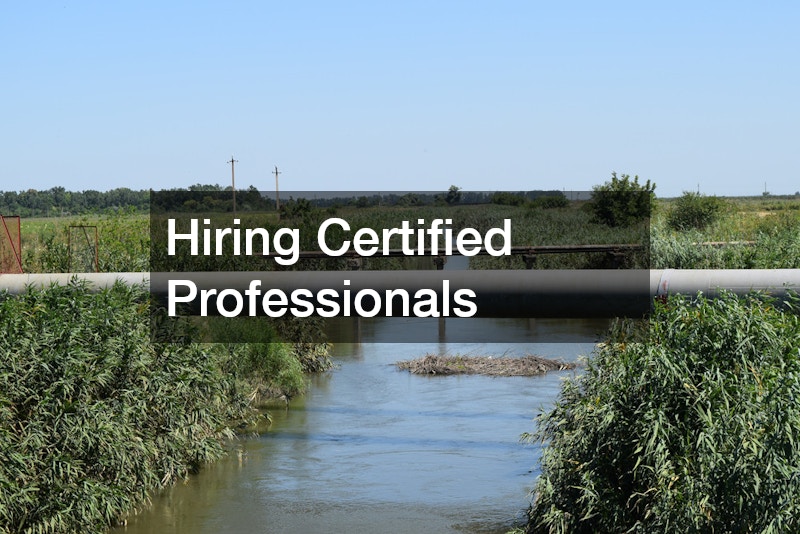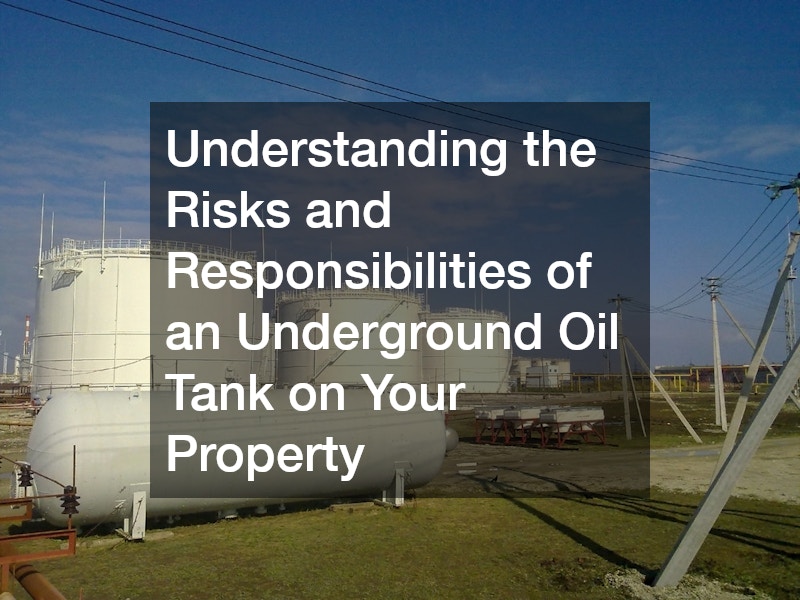Owning a property that contains an underground oil tank brings both risks and responsibilities. With environmental regulations and property values at stake, it’s crucial for property owners to understand the implications of having such a tank. This article delves into the most common questions property owners have concerning underground oil tanks.
Leakage and Contamination Concerns
Leakage is a primary concern with underground oil tanks. These leaks can lead to severe contamination of the soil and groundwater, making portions of the property hazardous and unfit for use. A leaking oil tank can go unnoticed for years, exacerbating the environmental damage over time.
It’s essential to understand that even small leaks can result in significant ecological repercussions. The contaminants from the oil can harm vegetation and wildlife in the vicinity. In residential areas, groundwater contamination poses a direct threat to drinking water supplies.
Regulatory Compliance
Many local and federal laws dictate standards for maintaining underground oil tanks. These regulations aim to prevent leaks and manage environmental impacts effectively. Non-compliance with these standards can result in hefty fines and legal ramifications.
Regulations often require property owners to maintain up-to-date records of inspections and maintenance activities. In some jurisdictions, registration of the tank with local authorities is mandatory. Lawmakers designed these regulations to ensure a structured approach to environmental stewardship and land use.
Impact on Property Value
The presence of an underground oil tank can significantly influence property value. Prospective buyers often view these tanks as potential environmental liabilities, leading to decreased interest or reduced offers. The stigma attached to oil tanks can overshadow the property’s other positive attributes.
Disclosures about the tank’s condition and any recorded issues form a crucial part of real estate transactions. Properly disclosing the existence and history of the oil tank ensures transparency and can aid in negotiating property value. Hidden issues related to tanks can lead to legal disputes post-sale, further harming the property’s perceived worth.
Regular Inspection and Maintenance
Property owners have a legal obligation to ensure their underground oil tanks are safe and well-maintained. Regular inspections by certified professionals can prevent leaks and uncover potential issues before they escalate. Establishing a maintenance schedule demonstrates a commitment to safety and compliance.
Routine maintenance involves checking the tank’s structural integrity, monitoring any signs of corrosion, and ensuring all components are functioning correctly. These preventative measures are more cost-effective compared to the expenses involved in resolving a full-scale environmental cleanup. Moreover, it is a way to protect the owner’s financial interests in the long term.
Disclosure Obligations
Disclosure of an underground oil tank’s presence is a key legal responsibility when selling a property. This transparency is not only a regulatory requirement but also a best practice to build trust with potential buyers. Complete and accurate disclosure can prevent legal disputes and protect sellers from liability.
Failure to disclose the presence of an underground oil tank can lead to lawsuits and financial penalties. Buyers rely on such disclosures to make informed purchasing decisions and plan for possible remediation efforts. In some cases, nondisclosure can result in rescission of the sale.
Liability for Environmental Cleanup
If an underground oil tank leaks, the property owner is generally liable for cleanup and remediation costs. Such financial responsibilities underscore the importance of maintaining appropriate insurance coverage. However, standard homeowners’ insurance policies may not cover environmental damage caused by tank leaks.
Consulting with insurance providers to understand coverage options for underground oil tanks is essential. Specialized environmental liability policies can offer peace of mind and financial protection. Preparation and proactive management can mitigate the financial risks associated with potential cleanup efforts.
Hiring Certified Professionals
Removing or replacing an underground oil tank requires expertise that only certified professionals can provide. These professionals ensure the project adheres to all safety and regulatory standards. Working with experienced contractors minimizes risks during the decommissioning process.
Certified contractors use specialized equipment and techniques to safely excavate and remove underground tanks. Their expertise in assessing site conditions ensures that the tank removal doesn’t inadvertently worsen any existing contamination. Property owners must verify contractor qualifications to ensure expertise and compliance with relevant standards.
Permits and Regulations
Acquiring the necessary permits for removing or replacing an underground oil tank is a crucial aspect of compliance. Local governments typically enforce stringent regulations to protect environmental and public health. Navigating these requirements efficiently is vital to avoid project delays and additional costs.
Understanding local regulations can also inform property owners about any special conditions or restrictions specific to their area. Working with the local environmental agencies can clarify any questions regarding permits and procedures. Complying with these regulations demonstrates responsibility and adherence to good environmental practices.
Assessment and Remediation
Before an underground oil tank can be removed, a comprehensive assessment of the site is necessary. This involves evaluating the condition of the tank, the extent of any potential leaks, and the soil and groundwater quality. If contamination is detected, remediation must be conducted to restore the site.
Understanding the risks and responsibilities associated with an underground oil tank is crucial for every property owner. Vigilant maintenance, adhering to legal obligations, and knowing how to manage potential risks can safeguard against environmental and financial losses. Proactively addressing these issues can ensure a safer environment and preserve property values.

